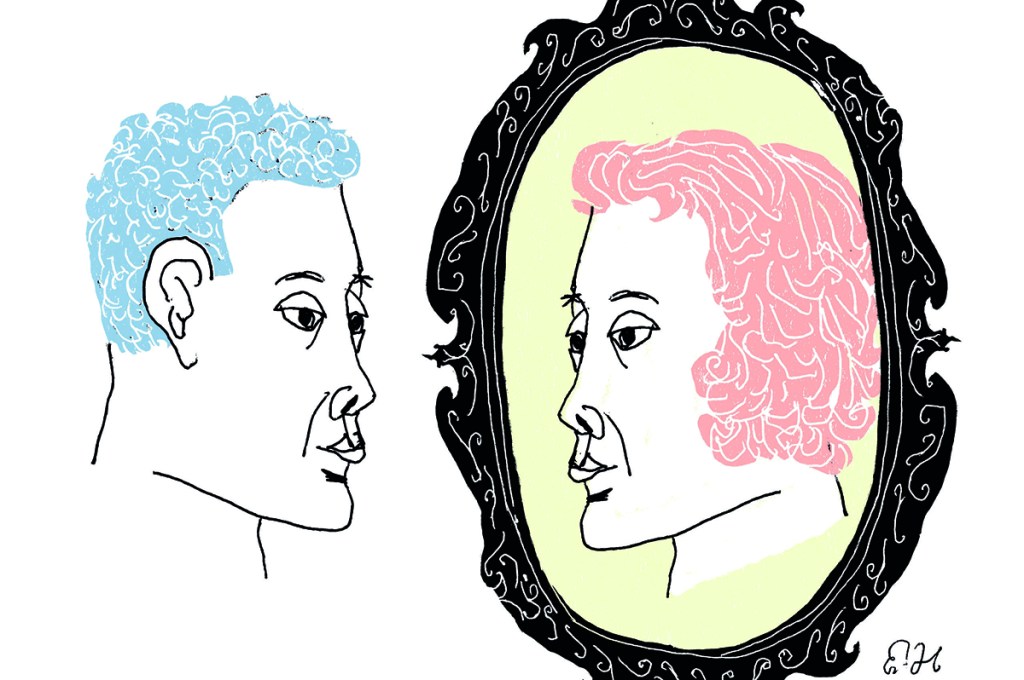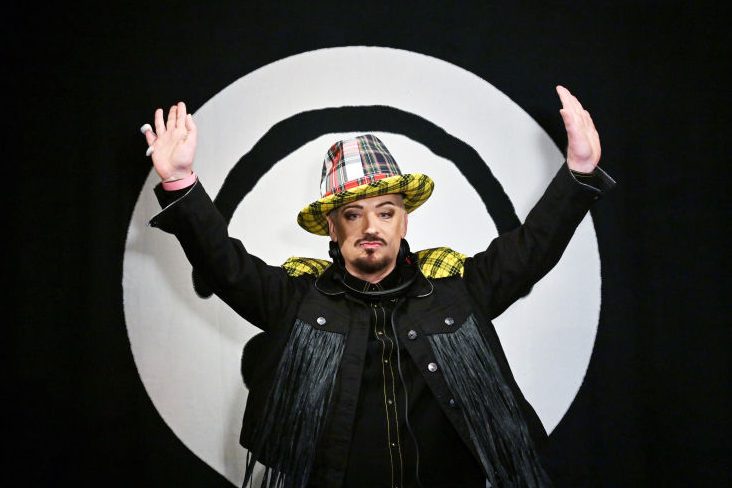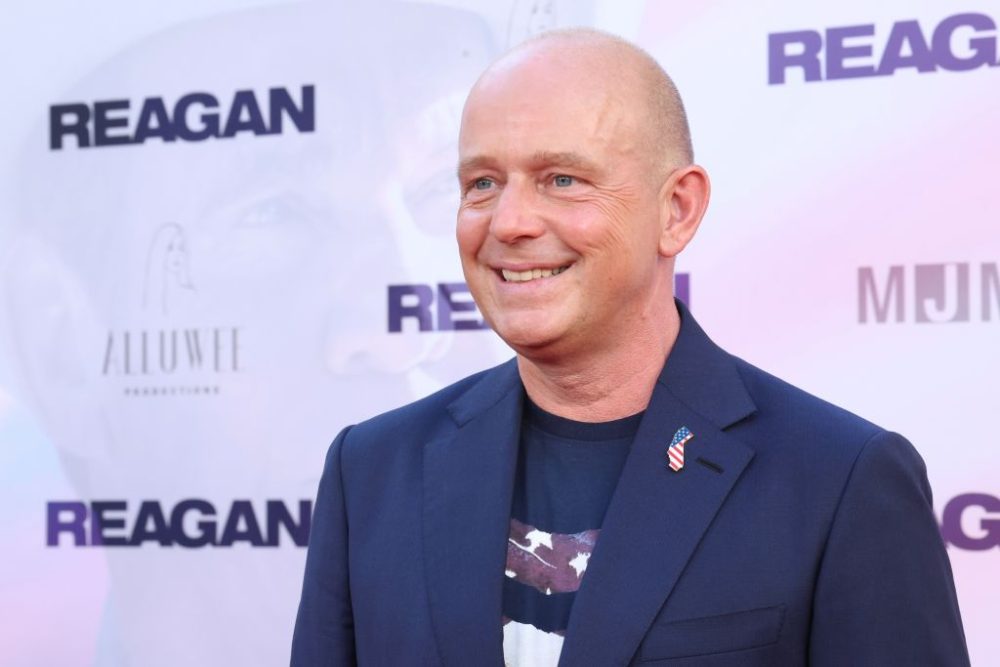Two things can be true at the same time. First, the Republican-backed state laws banning medical gender-transition treatment for youth — one has already passed in Arkansas — are a very bad idea. Second, there is a serious dearth of solid evidence in this area of medicine — and some reasons to be genuinely concerned about these treatments.
If you’re a consumer of mainstream American media, you’ve likely received a heaping dose of the first message. But the second, if you’ve encountered it at all, has probably been presented to you as a deeply unscientific, bigoted talking point. This is a problem.
It’s impossible to unpack what’s going on here without summarizing the recent history of youth medical transition. The basic situation is this: in the mid-1990s, a Dutch gender clinic began giving puberty blockers to children with persistent, intense gender dysphoria, in order to prevent the full development of secondary sex characteristics that could potentially cause them great anguish. Then, after further evaluation, most of the young patients proceeded to take cross-sex hormones in a manner similar to how transgender adults take such hormones. Later, if they wanted, they could also get surgery to complete their physical transition.
This represented a stark break from many past clinical practices with transgender and gender nonconforming (TGNC) youth, which often centered on trying to force them to act in a more gender-conforming manner in the hope that this would prevent them from settling into a permanent trans identity. The Amsterdam clinic, now housed at the VU University Medical Center, has published some of the only reasonably solid data suggesting that in the medium term, kids who go through this blockers-plus-hormones protocol appear to do well: ‘After gender reassignment, in young adulthood, the GD was alleviated and psychological functioning had steadily improved,’ a group of clinicians reported in a 2014 paper. ‘Well-being was similar to or better than same-age young adults from the general population.’
In 2007, the Dutch Protocol, as it is known, was brought to the States, initially to Boston Children’s Hospital. These days, blockers and hormones are available in many more American youth clinics, though access varies considerably by geography.
There are some crucial distinctions between the Dutch approach and how some US youth-gender clinicians currently practice. For example, because, as the Dutch clinicians Annelou de Vries and Peggy Cohen-Kettenis wrote in a 2012 article describing their protocol, ‘most gender dysphoric children will not remain gender dysphoric through adolescence’ (a finding that has emerged at multiple clinics), the Dutch clinic has historically discouraged childhood social transition, while also discouraging parents from shaming children for gender-nonconforming behavior. Clinicians there promote the practice of ‘watchful waiting’ until the onset of puberty, at which point, if the GD persists, it is taken as a useful indicator that blockers might be the right choice.
Further reflecting the clinic’s cautious approach, youth with significant mental health problems or a lack of family support (or both) have not been eligible for physical transition. So when we look at the Dutch-protocol data, we’re looking at a subset of kids and teens who were carefully assessed, over a long period of time, to ensure they had clinically significant gender dysphoria and that other mental health problems could be ruled out as the primary drivers of their distress. They all had good family support when they began transitioning.
To a vocal group of American clinicians and activists ardently seeking to expand access to youth medical transition, this is too cautious an approach — and there has been a backlash among some of them, not only against outright conversion therapy but also against Dutch-style ‘gatekeeping’. In 2018, Laura Edwards-Leeper, a highly regarded youth clinician who helped bring the Dutch approach to Boston, told me about ‘things almost being thrown at me at conferences’ because she favors in-depth assessment prior to medical transition.
While there are certainly some big, multi-disciplinary US youth-gender clinics that take a similar approach to the Dutch, access to them is limited — and not all clinics stress careful assessment prior to the administration of blockers or hormones. One, housed at the Center for Transyouth Health and Development at the Children’s Hospital of Los Angeles, for example, is the largest youth-gender clinic in the country. In a 2018 study of young people on hormones aged 12 to 24, the center reported that it had only been able to collect follow-up physiological data on about 60 percent of them — a high ‘lost to follow-up’ rate perhaps reflecting a laissez-faire approach to assessment. The often-quoted medical director there, Johanna Olson-Kennedy, is skeptical of in-depth assessments. ‘I don’t send someone to a therapist when I’m going to start them on insulin,’ she told me in 2018.
Whatever one thinks about these different approaches, it’s a fact that data generated from the Dutch clinic can’t be used to bolster the case for youth medical transition which takes place under very different circumstances. If kids go on blockers and hormones without good mental health and a careful assessment process, do they enjoy the solid outcomes observed by the Dutch? No one knows — and hardly anyone is trying to find out.
The lack of outcome data for gender-dysphoric youth who physically transition is one reason there has been a steady drip of news, mostly out of Europe, reflecting growing unease about these treatments. The UK has seen a complicated, slow-boiling controversy at the National Health Service’s sole provider for youth transition services, the Gender Identity Development Service at the Tavistock Clinic in London. Staffers there raised concerns about the quality of care; some argued children were being fast-tracked toward blockers and hormones in part as a result of activist pressure. Complaints from a young detransitioner who insists that she was not properly assessed, and who had a double mastectomy she regrets, culminated in a High Court ruling declaring that under-16s are unlikely to be able to consent meaningfully to blockers or hormones, making it much harder for this group to access treatment. An appeal is underway; in the meantime a convoluted process will still allow some young people to access these services with parental permission.
This spring Sweden banned youth medical transition outright at a number of gender clinics, including one at the famed Karolinska Institute, except in approved research studies. And in June last year the body that recommends on treatment methods in the Finnish public healthcare system published guidelines that emphasized the need for thorough assessment prior to the administration of blockers or hormones — stating that blockers may only be given ‘on a case-by-case basis after careful consideration and appropriate diagnostic examinations’.
These steps seem to reflect a growing realization that the holes in the research on youth medical transition are too big to ignore. Three major reviews of the literature conducted by government agencies in Finland, Sweden and the UK found an alarming lack of data supporting early treatments. The last, conducted by the NHS’s National Institute for Health and Care Excellence (NICE), found a grand total of five ‘uncontrolled, observational studies’ suggesting beneficial outcomes for dysphoric youth who go on cross-sex hormones. But they were methodologically weak, leading the review authors to caution: ‘Any potential benefits of gender-affirming hormones must be weighed against the largely unknown long-term safety profile of these treatments in children and adolescents with gender dysphoria’. The researchers came down similarly on the strength of the evidence base for puberty blockers, describing it as ‘very low.’ Distressingly, they categorized a landmark 2011 study by the Dutch on puberty blockers as ‘at high risk of bias (poor quality overall; lack of blinding and no control group)’.
This is all going on at a time when youth-gender clinicians all over the world are noticing a marked increase in referrals, mostly of biological females. At some clinics teenagers are presenting at older ages than previously — and with no evidence of childhood GD. No one knows exactly how to explain this, but there’s evidence that some adolescents are, as a result of peer and cultural influence, diagnosing themselves as having gender dysphoria and seeking out treatment. This claim is viewed as offensive by some — and to be clear no one knows how frequently it occurs. I have encountered such cases in my own reporting. They were not hard to find.
The change in youth GD referral patterns was sufficiently concerning to Annelou de Vries of the Dutch clinic that she wrote a 2020 commentary in Pediatrics suggesting the emergence of a ‘new developmental pathway… involving youth with post-puberty adolescent-onset transgender histories’. ‘This raises the question whether the positive outcomes of early medical interventions also apply to adolescents who more recently present in overwhelming large numbers for transgender care, including those that come at an older age, possibly without a childhood history of [gender dysphoria],’ she wrote.
Some late-onset GD youth have subsequently detransitioned and insisted, in interviews and YouTube videos, that their doctors and psychologists let them down — that there was a failure to explore past trauma and other mental health issues before proceeding to medical interventions. In the worst cases, they are left regretting surgeries they feel they never should have had. (There are also some early-onset GD detransitioners, as well as trans people who detransition as a result of transphobia, lack of funds for ongoing care, and so on.)
To call the situation ‘complicated’ would be a staggering understatement.
Yet if your primary source of information is mainstream American outlets, this is likely all news to you, or a faux controversy you associate with reactionaries. Inside the liberal bubble, everyone is united that the evidence for the benefits of youth medical transition is quite substantial — and that those who suggest otherwise are using their ‘concerns’ as a fig leaf for transphobia.
This attitude stems in part from genuine concern over those proposed state laws banning youth transition, which are indeed a severe overreaction. It is a giant leap from ‘we have limited data for the efficacy of this medical intervention’ to ‘politicians should ban this treatment outright despite the protests of the medical authorities’. Those cautious Dutch clinicians, after all, wrote that ‘despite the understandable concern about potential harm that could be done by early physical medical interventions, it seems currently that withholding intervention is even more harmful for the adolescents’ wellbeing during adolescence and in adulthood.’
I don’t want to gloss over the potential damage here. The clinicians I’m in contact with who are concerned that the pendulum has swung too far from assessment are even more concerned about these no-treatment laws. Youth gender care should be improved and professionalized — and clinicians operating negligently be rooted out; outright bans on treatment, though, can have immediately deleterious effects and be difficult to roll back. Consider the 16-year-old trans girl who has already transitioned being forced, by legislators, to detransition against her will; or a carefully assessed 13-year-old trans boy denied access to medication that could bring him relief from the gender dysphoria that has hindered him since toddlerhood.
Journalistically, the proper response to this issue is to give the details in all their complexity — not to leap to some extreme in which we pretend, for the sake of our political agenda, that there are zero legitimate questions about youth transition. Unfortunately, though, that’s what just about every major American media outlet has been doing. To be fair, this trend started well before the GOP state laws were introduced, but it is getting worse. The threat posed by these laws is often deployed as an excuse to not ask too many questions about extremely unsettled areas of medical research centered on very vulnerable populations.
I mean, what are you, anyway? One of those transphobic Trump supporters? This attitude underpins how these transition stories are framed and what news gets ignored entirely. Apart from the occasional fleeting reference neither CNN nor the New York Times nor the Washington Post nor Vox, all of which have offered near-blanket coverage of the proposed bans on youth medical transition, covered the NICE evidence review or any of the Tavistock controversy or the Karolinska decision.These outlets routinely repeat activist claims which should be given serious scrutiny and which sometimes defy basic, generally agreed-upon facts. ‘There is no consensus criteria for assigning sex at birth,’ explained CNN in a news article published in March, though editors there later struck that bizarre statement.
Mainstream coverage of this issue is a buffet of sanctimonious overclaiming. It says authoritatively that kids in the US can’t go on blockers or hormones prior to lengthy, in-depth assessment (false). That no one under 18 is getting surgery (false). That the worldwide rise in referrals to youth GD clinics is almost entirely the result of reduced stigmatization (no one knows). That GD, or the perception that one has GD, can’t spread through adolescent social networks (almost certainly false on the basis of anecdotal evidence and any familiarity with developmental psychology). That it’s a ‘myth’ that significant number of kids who believe themselves to be trans will later feel differently (false, according to all the existing data). That only a tiny percentage of people detransition (we have no data at all on this in the context of youth gender care in the States).
In this politicized hothouse, questionable claims that support the ‘right’ political conclusions flourish. For example, last year Pediatrics published a study in which a team led by Jack Turban — a fellow in psychiatry who racks up many media hits promoting the view that concerns over youth transition are overstated — purported to demonstrate a link between access to blockers and reduced risk of suicidal ideation. His paper is rife with crippling methodological problems.
The researchers took data from the 2015 United States Transgender Survey (USTS), a big sample recruited online, and zoomed in on the subset of respondents who reported ever having wanted puberty blockers. Then the researchers attempted to correlate this group’s access to blockers to various outcomes. In the controlled models, the only outcome that was statistically significant was lifetime suicidality: among respondents who reported ever having wanted blockers, those who reported receiving them reported lower lifetime suicidality than those who reported not having received them. Hence, the claim that blockers reduce suicidal ideation.
Except that, as the Oxford sociologist Michael Biggs and a number of other critics pointed out, causality could just as easily go the other way: maybe those in the higher-suicidality group were more suicidal as youngsters, and the clinicians they went to for blockers followed guidelines which state that the medication should not be administered if a child has serious mental-health problems. The design of the study offers us no reason to view this as a less likely explanation. While the authors briefly mention the causality issue in the study itself, Turban subsequently gave interviews and wrote a New York Times column that ignored it. (In the column, he actually misrepresented his own study as having measured young-adulthood suicidal ideation rather than lifetime suicidal ideation, which would support his preferred causal explanation.)
There’s an arguably bigger problem with the study, anyway, also highlighted by Biggs: 73 percent of the respondents to the USTS who said they’d been on blockers reported receiving them at age 18 or later. Since blockers aren’t usually given past age 16, this clearly indicates that the respondents didn’t know what blockers are — and that they, as the authors of the survey themselves suggest, have likely confused them with cross-sex hormones. To address this, Turban and his colleagues simply tossed out the results from this 73 percent, but given the extent of the confusion, why should anyone think it didn’t apply to the younger respondents too?
In short, we have no idea how many of the respondents who said they received puberty blockers actually did so; it could reasonably be argued that this study offers us zero evidence about the mental health benefits of blockers. And yet the New York Times ( repeatedly, including via Turban’s column), the Washington Post, Vox, Axios, CNN and many other outlets all summarized the paper in a manner very likely to confuse readers into thinking the study’s conclusions stemmed from a real-world clinical sample.
This credulous coverage was paired with an unwillingness to explore studies that actually did tell us something about the effects of blockers on mental health. In February, for example, the National Health Service’s Gender Identity Service finally published long-promised data on a cohort of 12- to 15-year olds who had gone on blockers and were tracked over the years that followed, which found no noteworthy changes in their mental health status, including in their thoughts of self-harm. The NICE review’s finding about the aforementioned Dutch study’s providing ‘very low certainty evidence’ about mental health outcomes has similarly slipped under the radar.
These studies certainly had their own weaknesses, but, unlike Turban and his colleagues’, they tracked the outcomes of actual clinical populations — and they didn’t find much. It is understandable if, as a result of some egregious cherrypicking on the part of journalists and editors, many Americans are confused about the actual state of the research on transgender medical issues for youth. But it is potentially disastrous for parents to falsely believe there’s strong evidence that puberty blockers protect against suicidal ideation. (As a caveat, we should keep in mind that if the goal of puberty blockers is to prevent a decline in mental health status as a result of puberty, ‘no change’ might be seen as a successful outcome.)
The instance of subpar reporting on youth gender dysphoria that I have found most dispiriting was in an April episode of The Daily, the New York Times’s blockbuster news podcast, which gets millions of downloads per day. Host Sabrina Tavernise interviewed Dan Levin, a national correspondent for the Times who focuses on youth issues, about the conservative bills. A lot of misinformation followed.
Levin, summarizing the argument of those testifying against the bills, said that legislation banning ‘gender affirming surgeries on anyone under the age of 18’ was ‘kind of a red herring, because these surgeries are not really done on people under 18.’ This is just false. Double mastectomies are regularly performed on under-18s in the US.
Levin also said that ‘in the case of puberty blockers, there’s a lot of research that has found that the effects are reversible if treatment is suspended.’ This claim is commonly trotted out, but there’s mounting uncertainty over whether it is accurate when it comes to the administration of puberty blockers followed by exogenous hormones (as opposed to when they are halted and natural puberty is allowed to take over, as in the case of blocking too-early or ‘precocious’ puberty). That’s why the UK’s National Health Service removed from its website in June 2020 language explicitly describing blockers as reversible and now notes that ‘it is not known what the psychological effects may be,’ nor ‘whether hormone blockers affect the development of the teenage brain or children’s bones.’
Perhaps most alarmingly, The Daily’s podcast included an audio clip of a youth gender clinician who explained that ‘there’s copious, copious numbers of publications showing that the use of puberty blockers in very young children for lengths of time of up to and over 10 years is safe.’ This is false. In fact, a ‘Dosing Standards’ document published by the Endocrine Society explains that ‘it is important to note that prolonged therapy with [puberty blockers] without the addition of sex steroid hormones is not advisable beyond two-three years given the potential impact of hypogonadism on the developing skeleton.’
Levin paraphrased the critics’ arguments, explaining of the trans youth potentially affected by these laws, ‘These kids are getting therapy. They’re getting medically tested to make sure that they’re healthy.’ Again, in the States we have absolutely no idea how common it is for trans youth to receive such a comprehensive level of care — and some certainly do not. Levin went on to say that ‘these decisions are always made in tandem with parents and doctors over a long period of time.’ That sentence is simply — I’m repeating myself — false. There are many known cases of minors receiving prescriptions for hormones within one or two visits of showing up at a gender clinic, without much longterm interaction with a physician (though parental approval is generally required).
Finally, Levin told The Daily’s millions of listeners that ‘transgender people who were treated with puberty suppressants during adolescence had lowered lifetime risks of suicide as adults,’ both ignoring the problems with the Turban study and falsely claiming it pertained to actual suicides, not suicidal ideation.
This is what’s happening over and over. Most reporters don’t have much experience covering this issue.When they take it up, they reach out early on to an activist organization, which in turn recommends media-friendly ‘experts’ who happen to be on the vanguard of this issue; i.e., seeking to break down the final vestiges of the ‘gatekeeping’ of trans youth. They will earnestly confide in the journalist that among real experts (like themselves), there are no legitimate concerns with the safety of medical treatment of very young trans youth. People who feel differently are transphobes. Simple.
This is a comfortable storyline, but it’s just not true. We desperately need better data on trans youth healthcare. But we don’t have it yet — in many ways, everyone is flying blind, especially families of kids with later-onset GD. Parents deserve every scrap of information that can help them understand not just the potentially profound benefits but also the risks and unknowns of blockers and hormones. American journalists, from an understandable but misguided desire to position themselves on the right side of an emotionally taxing and fraught issue, are hindering their ability to get it.
This article was originally published in The Spectator’s July 2021 World edition.

























